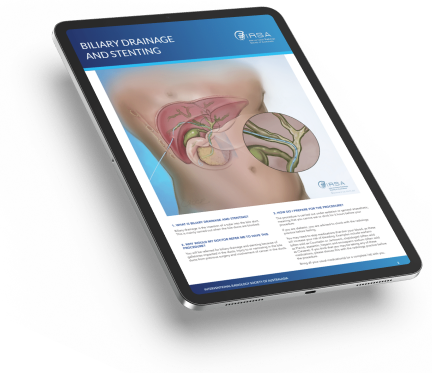WHO ARE INTERVENTIONAL RADIOLOGISTS?
Interventional radiologists are highly skilled in performing minimally invasive procedures using image guidance to diagnose and treat a wide range of medical conditions. They have trained as clinical diagnostic radiologists and work closely with other medical specialists to provide comprehensive patient care.
HOW CAN AN INTERVENTIONAL RADIOlOGIST HELP ME?
Interventional Radiologists use minimally invasive techniques using image-guidance to make precise diagnosis, undertake targeted treatments, and improved patient outcomes. If you are experiencing these conditions, or have similar symptoms, consulting with an interventional radiologist may provide you with effective treatment options for you to consider.
Chronic Pain
Are you experiencing chronic pain in areas such as your back, neck, joints, or nerves?
An interventional radiologist may be able to provide targeted pain management interventions; like nerve blocks, epidural steroid injections, facet joint injections, or radiofrequency ablation to alleviate pain and improve your quality of life.
Peripheral Artery
Disease (PAD)
Are you looking to alleviate symptoms like leg pain, cramping, or wounds that don’t heal properly?
These could be indicative of PAD, which occurs when there is a narrowing or blockage in the arteries that supply blood to the extremities, usually the legs. Interventional radiologists can perform procedures like an angioplasty and stenting, to restore blood flow and reduce the pain.
Varicose Veins
Looking for a minimally invasive solution to your enlarged, twisted veins that are causing you discomfort, pain, and cosmetic concerns?
Interventional radiologists offer treatments like endovenous laser therapy (EVLT), sclerotherapy, or radiofrequency ablation to close off the affected veins, improving blood circulation and reducing symptoms.
Uterine Fibroids
Women experiencing heavy menstrual bleeding, pelvic pain, and pressure, could be suffering from uterine fibroids; noncancerous growths that develop in the uterus.
Interventional radiologists can perform uterine fibroid embolisation (UFE), a minimally invasive procedure that cuts off the blood supply to the fibroids, causing them to shrink and relieving associated symptoms.
Liver Tumours
Do you have liver tumours? Either primary liver cancer or metastatic tumours from other organs.
Interventional radiologists can perform procedures like radiofrequency or microwave ablation, transarterial chemoembolisation (TACE), or selective internal radiation therapy (SIRT) to target and destroy cancer cells while preserving healthy liver tissue.
Kidney Conditions
Are you suffering from kidney tumours, renal artery stenosis, or kidney stones?
Interventional radiologists can perform minimally invasive procedures like percutaneous nephrostomy, embolisation, or image-guided biopsies to manage and treat these conditions effectively.
Conditions Treated by IR
An interventional radiologist can work with doctors or specialists to treat many of today’s toughest medical
problems, including cancer, vascular diseases, and men’s and women’s health conditions.
- Abdominal aortic aneurysm (AAA)
- Cancer
- Critical limb ischemia
- Deep vein thrombosis
- Enlarged prostate
- Female infertility
- Hereditary hemorrhagic telangiectasia
- Hypertension
- Male infertility
- May-Thurner syndrome
- Pain management
- Pediatric biliary-enteric stricture
- Pediatric failure to thrive
- Pelvic venous disease
- Pulmonary embolism
- Stroke
- Trauma and bleeding
- Venous disease
- Vertebral compression fractures
- Y90
Procedures Performed by IR
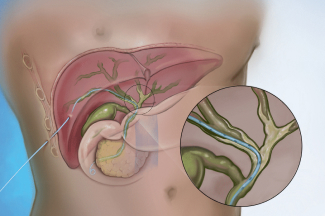
BILIARY DRAINAGE AND STENTING
Biliary drainage is the insertion of a tube into the bile duct. This is mainly carried out when the bile ducts are blocked.

Carotid
Stenting
Carotid stenting encompasses a spectrum of advanced medical procedures designed to address conditions affecting the blood vessels that are supplying the brain or neck region.

Cryoablation for Kidney Tumours
Cryoablation offers a minimally invasive treatment option that effectively destroys cancerous cells while preserving healthy tissue. It is performed by interventional radiologists, who use advanced imaging technology to guide the procedure.

Embolisation for Mesenteric Artery Aneurysms
A mesenteric artery aneurysm is a condition where a section of the artery that supplies blood to your intestines weakens and bulges. These aneurysms in the aortic wall are relatively rare but can pose significant health risks if left untreated.
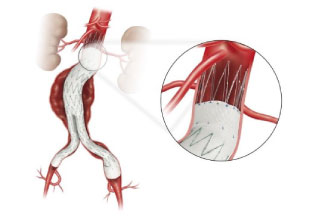
Endovascular Aneurysm Repair
Endovascular Aneurysm Repair (EVAR) is an advancement in the field of vascular surgery, offering a minimally invasive solution to manage aortic aneurysms.

GENICULAR ARTERY EMBOLISATION
A modern knee pain treatment solution for individuals dealing with persistent and stubborn knee pain due to arthritis.
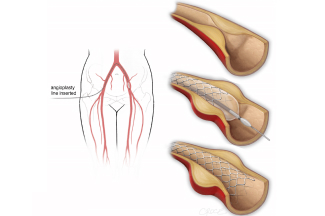
LOWER LIMB ANGIOPLASTY
Angioplasty is a procedure to open narrowed or blocked blood arteries that supply blood to your legs. A stent is a small, metal mesh tube that keeps the artery permanently open.
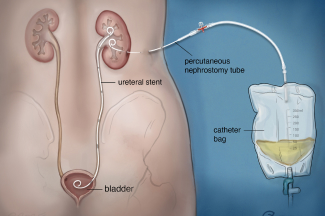
NEPHROSTOMY
A nephrostomy is a procedure to drain urine from your kidney using a catheter (tube).
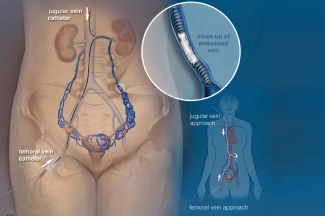
OVARIAN VEIN
EmBOLISATION
Ovarian vein embolisation is a minimally invasive treatment that is used to close off faulty veins so they can no longer enlarge with blood, thus relieving the pain caused by congestion.

PROSTATE ARTERY EMBOLISATION
Prostate artery embolisation is a minimally invasive procedure performed by interventional radiologists to treat an enlarged prostate.

Paediatric Interventions
Minimally invasive procedures for a variety of conditions that impact children.

PERCUTANEOUS
Percutaneous means “through the skin”. A biopsy is a method of using a special needle to take a small piece of tissue from inside the body for analysis in the laboratory, normally to diagnose or exclude cancer.
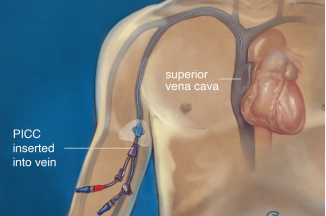
PICC
A PICC is a long soft flexible tube (catheter) that is usually inserted into one of the veins in the upper arm. The tube is then advanced into a large vein next to the right side of the heart.

PORT PLACEMENT
A port is a small medical implant that is inserted beneath your skin. It consists of a reservoir compartment (the port) with a silicone diaphragm that provides a watertight seal around the area where a needle is inserted.

Renal Artery Stenosis
Renal artery stenosis is a narrowing of the vessel(s) supplying blood to your kidneys,. If you’ve been diagnosed with renal artery stenosis, minimally invasive procedures like renal artery angioplasty and stenting by an interventional radiologist can be a minimally invasive solution.

SIRT
SIRT is a minimally invasive treatment for tumours arising in the liver or that have spread to the liver, from other places in the body, such as the bowel or breast.

TACE
Transarterial Chemoembolisation is a form of chemotherapy delivered through the arteries that allows treatment to be targeted to liver tumours and minimises the amount of chemotherapy the rest of the body is subject to.

TIPS
TIPS is a procedure that lowers pressure in the portal vein. That’s the vein that moves blood to your liver.

Tumour
Ablation
Tumour ablation is the process whereby a needle is placed directly into a tumour and a treatment is delivered aiming to kill the tumour in place.

Varicose
Veins
Varicose veins occur when the valves in the veins malfunction, causing blood to pool and veins to enlarge. Interventional Radiology’s minimally invasive procedures can reduce varicose vein’s impact on the body.

Varicocele Embolisation
Varicocele embolisation is an image-guided procedure that uses a catheter (thin, plastic tube) to place tiny coils and/or a liquid substance into a malfunctioning vein in your scrotum to divert blood flow away from a varicocele.

Vertebroplasty
Vertebroplasty is a minimally invasive procedure, performed by an interventional radiologist, that can reduce severe spinal pain caused by new osteoporotic vertebral fractures.

UAE
Uterine Fibroids are benign (non-cancerous) growths in the uterus which may lead to various symptoms including heavy and painful periods, going to the toilet frequently, pelvic pressure.
YOUR IR PATHWAY
Considering interventional radiology? This step-by-step guide takes you from recognising health concerns to getting a referral, preparing for your appointment, and meeting your specialist.
Find an IR Near You
Our Doctor Finder is a comprehensive database of interventional radiologists practicing in Australasia. Use the search fields to search based on geographic location or by area of practice.
Patient Resources
Discover More About How IR
CAN HELP YOUR PATIENTS
Learn more about the treatments performed by Interventional Radiologists by downloading our Patient Brochures.
